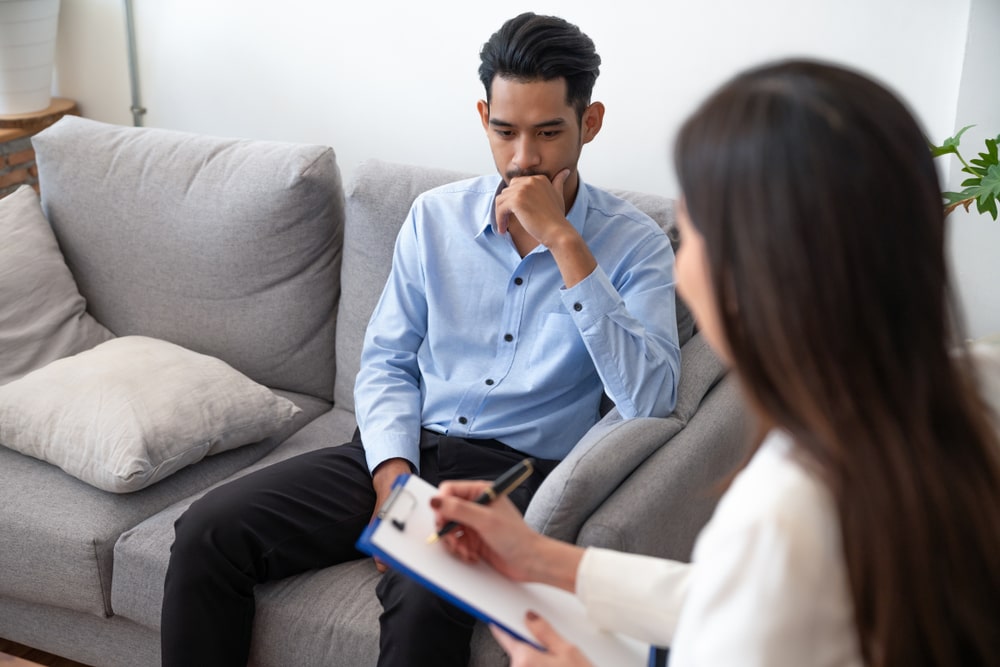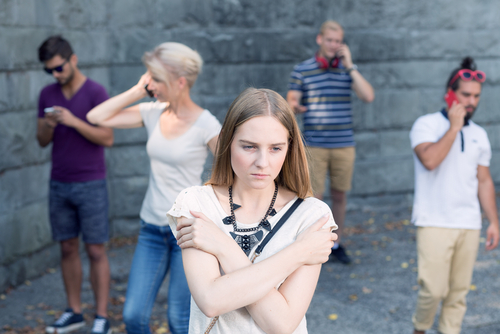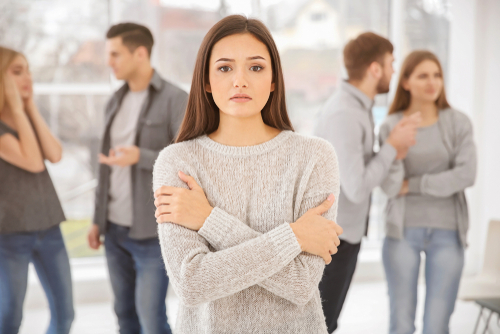
Social anxiety refers to fear or worry related to interactions in social situations. The Mayo Clinic explains that “comfort levels in social situations vary, depending on personality traits and life experiences…some people are naturally reserved, and others are more outgoing.” An individual that struggles with debilitating and pervasive symptoms of social anxiety may have social anxiety disorder. Social anxiety disorder (SAD), also referred to as social phobia, is listed in the Diagnostic and Statistical Manual of Mental Disorders, Fifth Edition (DSM-5) as a chronic mental health condition. The National Institute of Mental Health (NIH) explains that social anxiety disorder is “characterized by persistent fear of one or more social or performance situations in which the person is exposed to unfamiliar people or to possible scrutiny by others.” Social anxiety disorder is the second most diagnosed anxiety disorder and affects approximately 15 million American adults.
Cognitive Behavioral Therapy
According to the Anxiety & Depression Association of America (ADAA) cognitive behavioral therapy (CBT) is the clear first-line psychotherapeutic treatment for SAD. Cognitive behavioral therapy was developed in the 1960s by psychiatrist, Aaron Beck. CBT is a structured, short-term form of psychotherapy that “targets multiple areas of potential vulnerability (e.g., cognitive, behavioral, affective) with developmentally-guided strategies and traverses multiple intervention pathways.” CBT encompasses numerous strategies, and the most effective component of CBT is exposure to feared social situations. Cognitive behavioral therapy relies on a goal-oriented approach to hone healthy coping mechanisms for reducing anxiety and stress. The steps of CBT include the following, provided by Psychology Today:
- Identify troubling situations and/ or conditions in your life.
- Become aware of your emotions, thoughts, and beliefs connected to these troubling situations.
- Identify inaccurate and/ or negative thinking that may be contributing to your troubles.
- Reshape inaccurate and/ or negative thinking. To help facilitate this step, a therapist may encourage you to ask yourself if your view of the situation is based off an inaccurate perception of the situation or off facts.
CBT is based on the notion that one’s thoughts govern one’s feelings, which are directly linked to and influence one’s behaviors. The CBT framework aims to help people break unhealthy behavioral patterns by identifying and replacing dysfunctional patterns with positive thinking patterns. Despite the availability of effective treatments, data suggests that fewer than 5% of people of with social anxiety disorder pursue treatment in the year following initial onset and more than a third of people report symptoms for 10 or more years before getting help. If left untreated, social anxiety disorder can lead to adverse short- and long-term physiological consequences.
Treatment In Calabasas
Calabasas is a city in California. It is a well-known suburb of Los Angeles, located west of the San Fernando Valley and north of the Santa Monica Mountains. Over the past decade, the city of Calabasas has grown in its reputation for luxury as well as for privacy which makes it a hidden gem for residential living for society’s elite, and one of the most desirable destinations in Los Angeles County. It is also home to a plethora of highly qualified mental health clinicians providing an array of therapeutic services and treatment options.
The information above is provided for the use of informational purposes only. The above content is not to be substituted for professional advice, diagnosis, or treatment, as in no way is it intended as an attempt to practice medicine, give specific medical advice, including, without limitation, advice concerning the topic of mental health. As such, please do not use any material provided above to disregard professional advice or delay seeking treatment.




